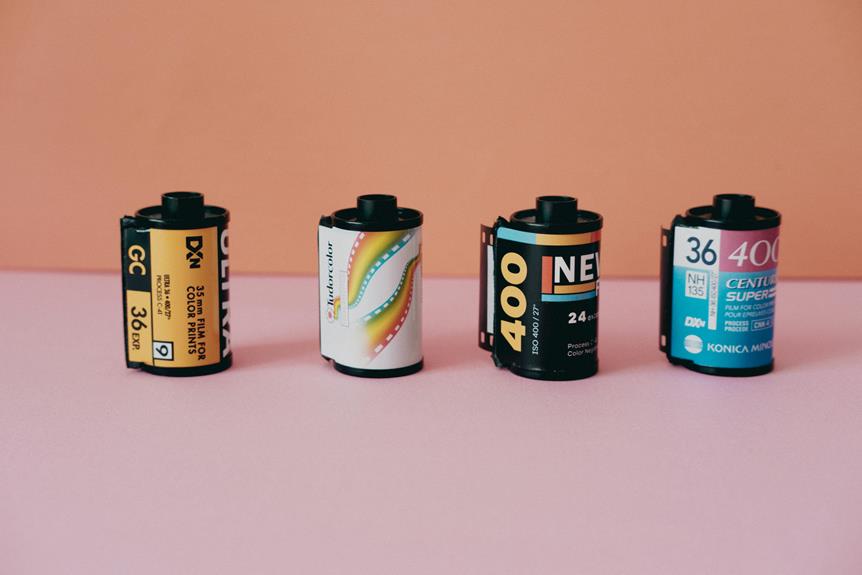
When choosing between a DSLR and a mirrorless camera, consider your priorities. DSLRs offer superior image quality with larger sensors but are bulkier than mirrorless cameras. Mirrorless cameras, on the other hand, are compact, lightweight, and excel in autofocus speed. Your decision should factor in portability, lens availability, and shooting preferences to find the perfect fit. Explore the differences further to make an informed choice.
Image Quality and Sensor Size
When comparing DSLR and mirrorless cameras, the image quality and sensor size play a crucial role in determining the overall performance of each camera type. DSLRs traditionally have larger sensors, such as APS-C or full-frame, which generally result in higher image quality, particularly in low light situations. The larger sensor size allows for better light sensitivity and dynamic range, producing sharper and more detailed images.
On the other hand, mirrorless cameras are known for their compact size and lighter weight, which is partly due to their smaller sensor size. While this can sometimes impact image quality compared to DSLRs, advancements in mirrorless technology have led to significant improvements in sensor performance. Many mirrorless cameras now offer comparable image quality to DSLRs, especially in well-lit conditions.
Ultimately, when choosing between a DSLR and a mirrorless camera, consider your priorities regarding image quality. If you prioritize top-notch image quality and are willing to carry a slightly larger camera, a DSLR with its larger sensor may be the better choice. However, if portability and convenience are essential to you without sacrificing too much on image quality, a mirrorless camera could be the perfect fit.
Autofocus Speed and Accuracy
In considering camera types like DSLR and mirrorless, the autofocus speed and accuracy emerge as key factors influencing overall performance. Both DSLR and mirrorless cameras offer advanced autofocus systems, but there are some differences to note.
Mirrorless cameras generally excel in autofocus speed due to their on-sensor phase-detection technology, providing quick and precise focus in various shooting conditions. This is especially beneficial for capturing fast-moving subjects or in challenging lighting situations.
On the other hand, DSLRs traditionally rely on a separate phase-detection autofocus module, which can be highly accurate but may not always match the speed of mirrorless systems. However, some high-end DSLRs have advanced autofocus systems that rival mirrorless cameras in speed and accuracy.
When choosing between DSLR and mirrorless, consider your typical shooting scenarios to determine which autofocus system best suits your needs for capturing sharp and well-focused images.
Size, Weight, and Portability
Considering the size, weight, and portability of DSLR and mirrorless cameras is crucial for determining which camera type best suits your on-the-go photography needs. Mirrorless cameras are generally smaller and lighter than DSLRs due to their lack of a mirror box and optical viewfinder. This makes them more compact and easier to carry around for extended periods. If you prioritize portability and want a camera that won't weigh you down on your adventures, a mirrorless camera might be the better choice.
On the other hand, DSLRs tend to be bulkier and heavier because of their internal mirror mechanism and optical viewfinder. While they may offer a more substantial grip for some users, the added weight can be a drawback when you're traveling or shooting for long durations. If you prefer a camera with a solid, robust feel and don't mind the extra weight, a DSLR could be the right fit for you.
Ultimately, your preference for size, weight, and portability will play a significant role in determining whether a DSLR or mirrorless camera is the ideal companion for your photography endeavors.
Lens Options and Compatibility
To make the most of your camera system, understanding the lens options and compatibility available is essential. When choosing between a DSLR and a mirrorless camera, consider the lens selection each offers. DSLRs typically have a wider range of lenses available due to their longer presence in the market. However, mirrorless cameras are catching up quickly, with many manufacturers expanding their mirrorless lens lineup.
One crucial factor to consider is lens compatibility. Some mirrorless cameras can use DSLR lenses with the help of adapters, but this may affect autofocus functionality. On the other hand, DSLRs are limited to their specific lens mounts.
Furthermore, both DSLRs and mirrorless cameras offer a variety of lenses suited for different photography styles, such as wide-angle, portrait, macro, and telephoto lenses. Before investing in a camera system, ensure that the lenses you need are available and compatible with your chosen camera type. Your lens choice can greatly impact the versatility and quality of your photography.
Conclusion
So, when it comes down to choosing between a DSLR and a mirrorless camera, it ultimately depends on your specific needs and preferences.
If you value image quality and sensor size, a DSLR may be the better option for you.
However, if you prioritize autofocus speed and accuracy, as well as size, weight, and portability, a mirrorless camera might be the right choice.
Consider your priorities and do some research before making your decision.




